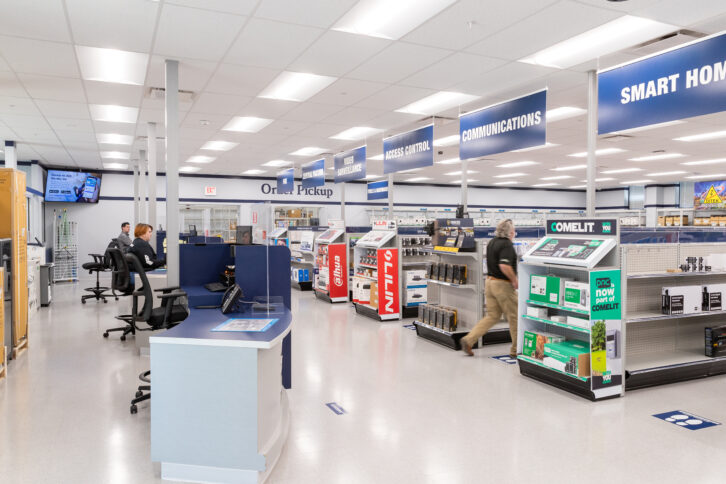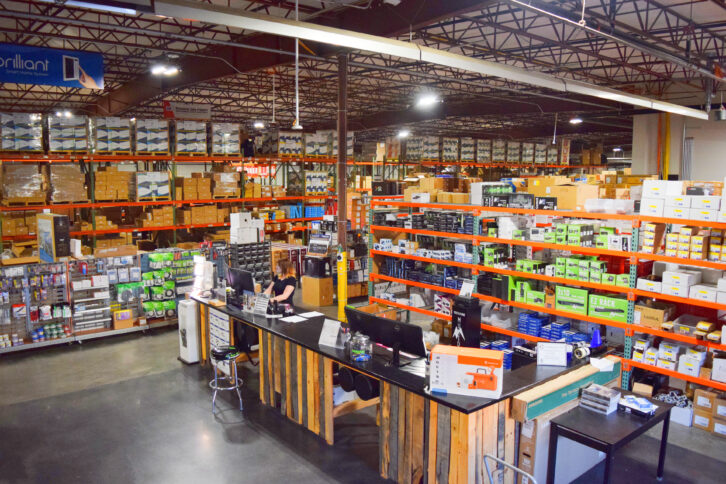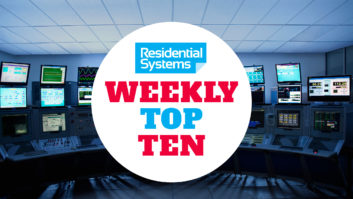Industry distributors are in a unique position to assess current pain points for integrators and to offer solutions on what can be done to alleviate them.
“Supply chain and inventory issues continue to be a concern,” says Cynthia Menna, vice president and general manager, AV, ADI Global Distribution. “ADI has a strong supply chain and logistics operation and we’re focused on providing our customers with access to the products they need, when they need them. We work very closely with our supplier partners to maintain appropriate inventory levels and quickly identify any shortages.”
Additionally, she adds, ADI is hearing from customers that the decline in new residential builds, coupled with rising interest rates, declining consumer spend, and overall market uncertainty are some of the biggest challenges right now affecting their businesses.

At PowerHouse Alliance, executive director Dennis Holzer says, generally speaking, its dealers are seeing incredible success this year. “And as supply chain pressures continue to ease, they’re seeing more products readily in stock. As one challenge begins to dissipate, we are seeing another concern starting to bubble up. The biggest issue our dealers are voicing is the challenge of forecasting for the rest of the year.”
And while consumer appetites for technology have not waned yet, he notes, there is concern that as inflation persists and rumors of the recession are looming, business could slow down quickly. “As an industry that trends with overall housing trends, it’s important to note that housing starts have been trending down the last six months. Dealers are anticipating a dip, but as homeowners continue to buy it has been challenging to predict when the slowdown will hit.”
Solutions at Hand
“Our industry is no stranger to weathering the storms of a recession, and our hope is to help dealers work smarter through any lulls they may experience in their business,” Holzer says. “While working through the last year of supply chain issues, dealers learned to be flexible, and that’s a skill they can transfer into preparing for any business slowdown.”
Holzer points to an April report by The National Federation of Independent Businesses that found that labor quality was the top business problem at 24 percent, with inflation in second place by one point at 23 percent. “The PowerHouse Alliance is working diligently to address the need for qualified talent in our industry.” He says. “This summer we will be launching our hands-on local training efforts in cooperation with CEDIA. These courses will be offered at PowerHouse locations across the country and will provide an accessible learning environment for both dealers and young students to train new employees and upskill their current staff.”

Across the supply chain, communication remains key. “Our demand planning team collaborates regularly with both our suppliers and integrators to monitor inventory levels,” says Menna. “At ADI, we conduct an integrated business planning process with suppliers to understand their current inventory, secondary and tertiary component sourcing, and levels of production so that we can respond with additional safety stock or order expedites, when necessary. Additionally, we encourage our customers to forecast their needs, stock up on most installed products, and engage our team as soon as possible when starting a new project so we can help them secure what they need.
“With the market softness, we’re helping our customers diversify their offerings and expand their portfolios to offer retrofit solutions, product upgrades, and technologies across adjacent categories,” she adds. “Our team is focused on helping customers understand what other products they can be offering to the customers they are serving. If they are already in the home (or commercial site), what else can they sell? With ADI’s comprehensive product offering, we continue to help customers combat inventory concerns. We carry products from more than 700 suppliers to provide a wide array of choices, and customers depend on our team to help them learn about and security alternative products, when necessary.”
ADI is also helping its customers discover opportunities related to the DIY market, Menna says. “Typically, dealers have felt threatened by DIY, however, now these products are becoming a gateway for end users wanting more complete solutions and support; and that is where the dealer comes in. In addition, we’ve seen an increase in more technology-forward home office packages, for example, in mirroring the office in-home through upgraded camera and conferencing solutions. ADI is well positioned to support cross-over spaces through our extensive Resi and Pro AV solutions. This ties back to what they can sell.
“We’re also helping our dealers uncover opportunities in light commercial and professional markets,” she adds. “Through our Herman Integration Services, we provide AV systems integrators with trained and industry-certified technicians, project managers, programmers, and engineers through this unique subcontracting services. This allows us to help our dealers take on more jobs, expand into adjacent product categories, and capitalize on the growing professional AV segment.”
Projecting the Projects
Holzer notes that at the beginning of the year, the National Retail Federation forecasted that retail sales would grow between 4 and 6 percent, representing a dip from the 2022 growth rate of 7 percent. “While still above the pre-pandemic growth average of 3.5 percent, dealers who’ve been enjoying excess revenues would be wise to increase their cash reserves as a precaution,” he says. “In addition, using distribution allows integrators to keep their on-hand inventory at a very minimum, with access to tier-one branded vendors’ merchandise only a short drive away.
“There is plenty to be optimistic about as technology plays an ever-increasing role for homeowners. Slowing retail sales simply means that dealers will need to continue to be flexible and get creative with their offerings. A company that relies purely on referrals may need to amp up its marketing efforts, while other companies that focus on always closing new business may need to go back to their roster of core customers to offer upgrades.”
Menna says that ADI remains in constant communication with suppliers and customers, and is hearing from them that they expect to see business recover and to pick up more in the second half of the year. “We’re also seeing many of our customers who stocked up on products in response to supply chain concerns work through their inventory, which indicates projects have picked up,” she says. “Our customers depend on us, and we’ll continue to support them in any way we can to help them drive new business, including training enablement for both product and business, resources out in the field, joint calls with customers, and more.”







